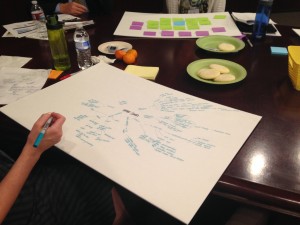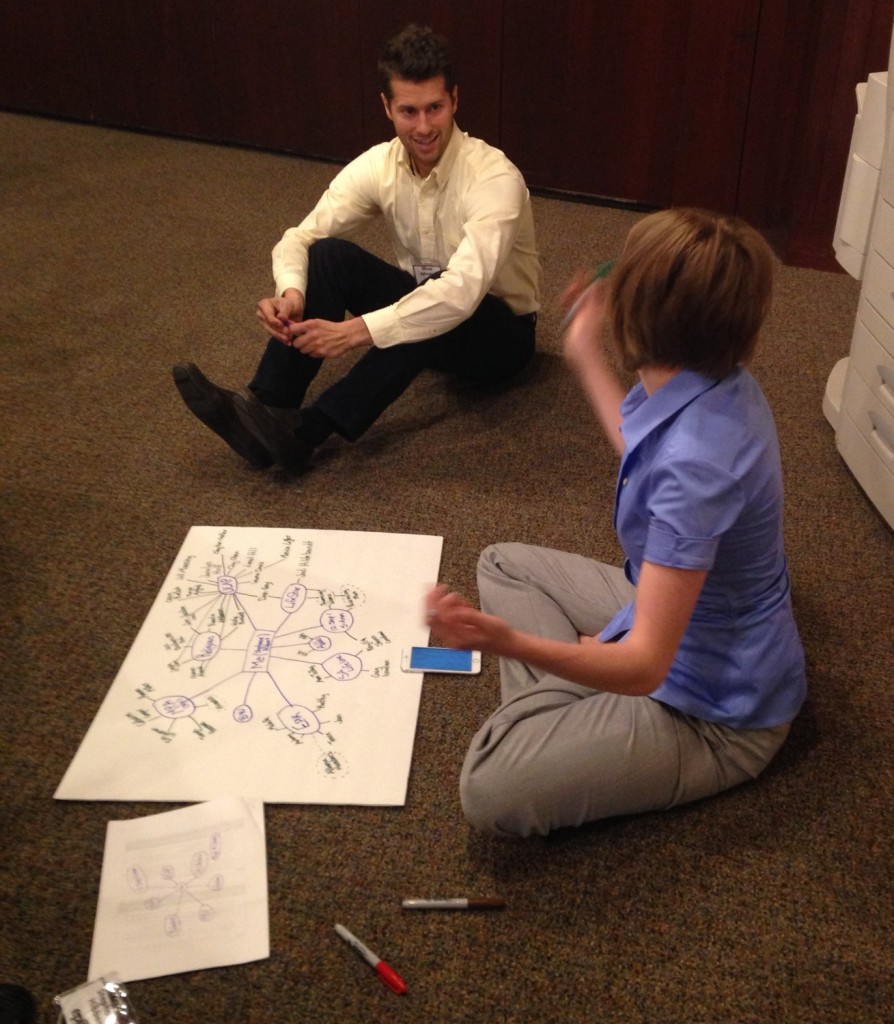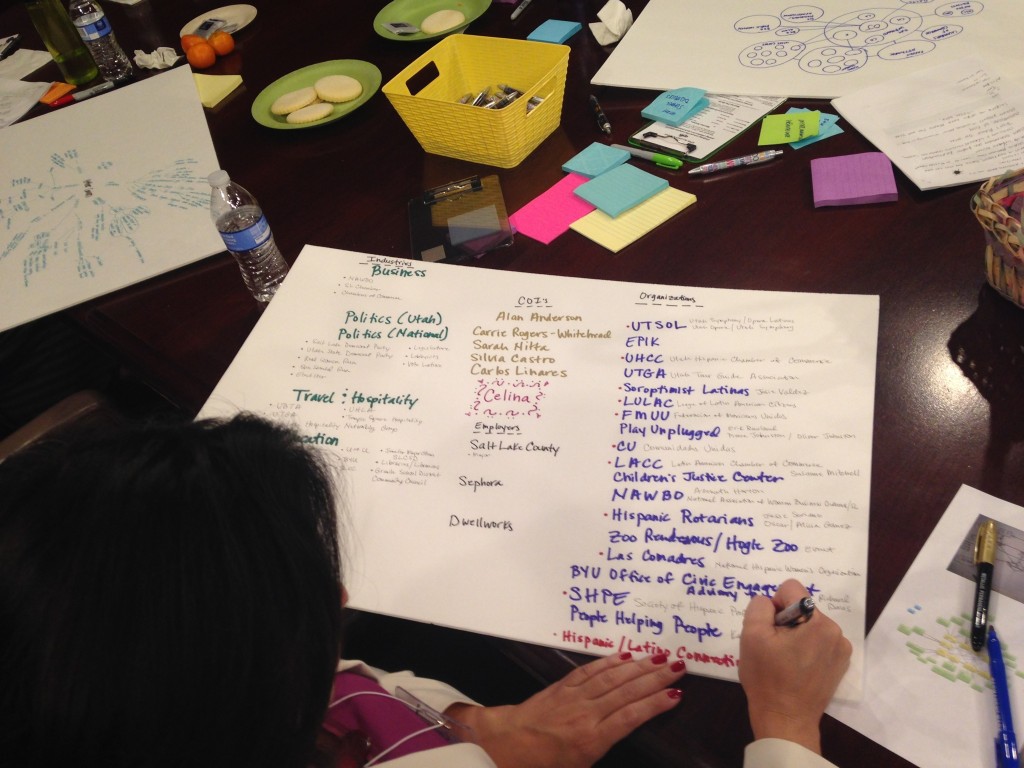Network Weaving {Phase II: EPIK Alliance Meeting Report}
You can read Part 1 of the Meeting Report here, which includes a report of the discussion at the beginning of the meeting, and a summary of Phase I in the EPIK Alliance Collective Impact effort.
The work of this meeting was network mapping, with the intent to do what is called Network Weaving. Some background on Network Weaving follows, as well as a summary of the network mapping work done in the April meeting.
What is Network Weaving?
Tamarack, a leading Collective Impact organization, addresses the importance of Network Weaving on their site, with an article by Arti Freeman.
[T]he ability to map, understand and weave networks strategically enhances collective impact initiatives, making them more likely to succeed.According to June Holley, author of the ‘Network Weaver Handbook’, transformational change happens when new networks supersede or replace the old ones.
If a diverse set of actors want to coordinate their efforts in order to achieve collective impact, then it is critical that those that are already thinking about or engaging in activities to bring about the change are connected to each other.
As a backbone organization for the collective impact effort addressing the complex, multifaceted nature of what it means to raise children in a tech-driven world, EPIK has, to this point, been the primary hub for the collective network. In April’s meeting, Scoping Committee members were invited to also act as hubs in their networks and begin to think more deliberately with a network mindset. We want a network of multiple hubs connected together.
Another name for a hub that is used by one of the Alliance members is a Center of Influence or COIs. As hubs or COIs engage deliberately with their networks, and then connect into the larger whole, there is more potential for impact, information flow, and collective, community learning. There is also more potential for innovation. Especially because we are dealing with technology — a fast-paced, ever-changing world — building a responsive, connected community system will be imperative to getting us in front of the eight ball, as it were.
Even as Collective Impact focuses on long-term, large-scale change, Network Weaving encourages smaller, self-organized, short-term projects that are “critical building blocks” to collective impact. These simpler efforts allow for trust- and relationship-building, experimenting to learn “more about what works and what doesn’t,” and building collaborative skills. They also should be “focused on opportunities and leverage points that have the greatest chance of making a difference.” And then, if the larger network is adequately connected, “patterns of success” can be noted and discussed, and effects of successes and key learnings can ripple throughout the community. (See Network Weaver Handbook, p. 21.)
One of the best ways to identify potential leverage points is to spend the time creating a visual map of the community network/system. There are two simple steps to Network Weaving: 1) Know your network and 2) Knit your Network (again see June Holley’s work).
In our meeting, we started the process of knowing our network by inviting each attendee to draw their own network map. (The work done in November and January were preliminary steps to the network mapping process.)
Each person was given a foam board and instructions (see presentation for instructions, or simple examples of Network Mapping). (Participants were engaged enough in the process that they opted to use the remainder of the meeting time to work on their network maps!) Below are some photos from the activity.
In future meetings, we’ll work on expanding network maps to include those outside of our committee, and knitting/weaving the networks together. We’re also already looking for leverage points within and across networks, sectors, and Issue Buckets.
For more information about Network Weaving, a concept pioneered by June Holley, see www.networkweaver.com. An excellent article on Network Weaving can be found here. In the nonprofit world, there is also the concept of Networked Nonprofits. Read more in the Stanford Social Innovation Review, and see also the work of Beth Kanter.







